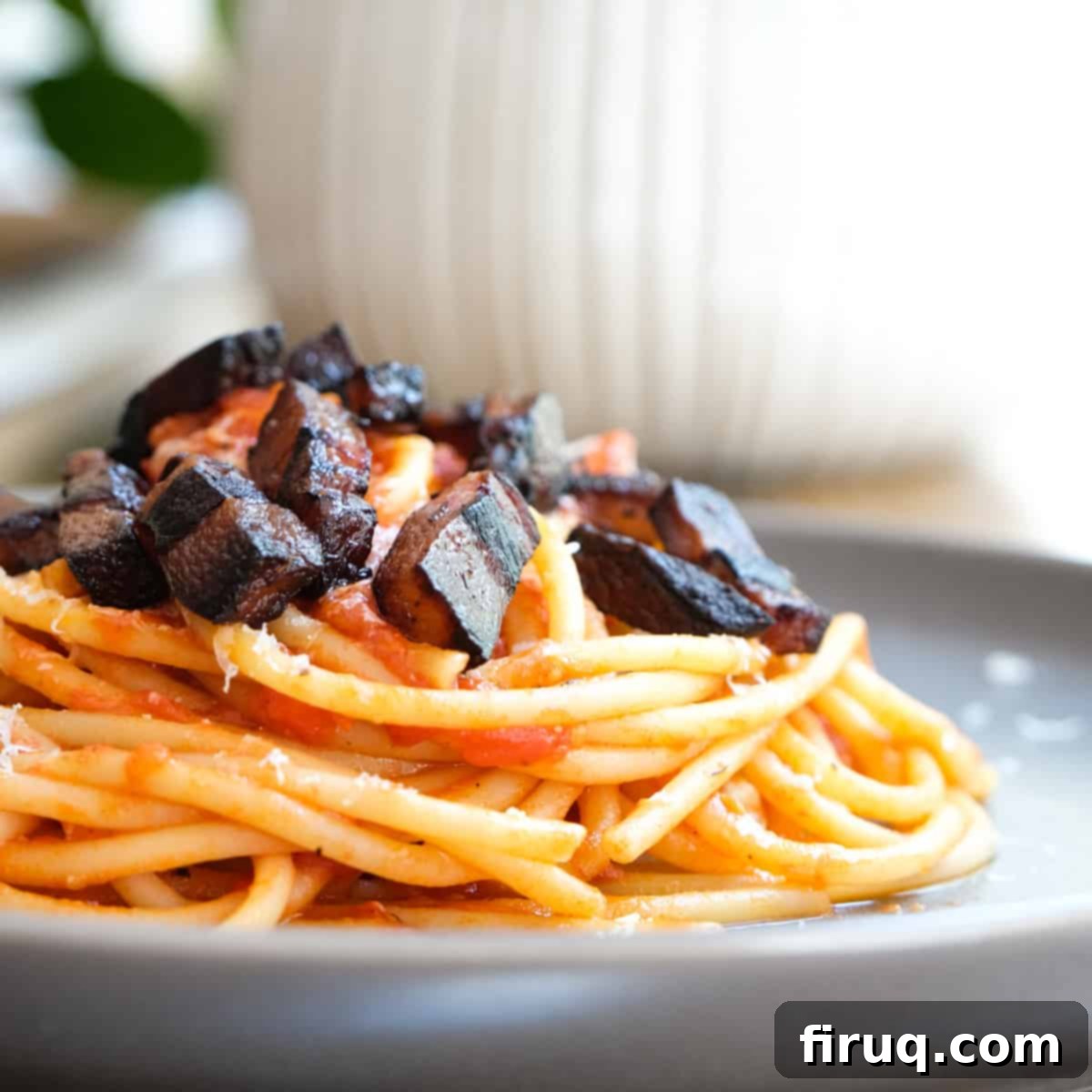Authentic Bucatini Amatriciana: A Quick & Flavorful Roman Pasta Masterpiece
Prepare to impress with Bucatini Amatriciana, a truly iconic Roman classic. This creamy, savory red sauce pasta, elevated by the exquisite crunch of rich guanciale and a subtle hint of spice, stands as my absolute favorite. The best part? It’s a culinary journey you can embark on and complete in under 30 minutes, making it perfect for both weeknight dinners and special occasions.
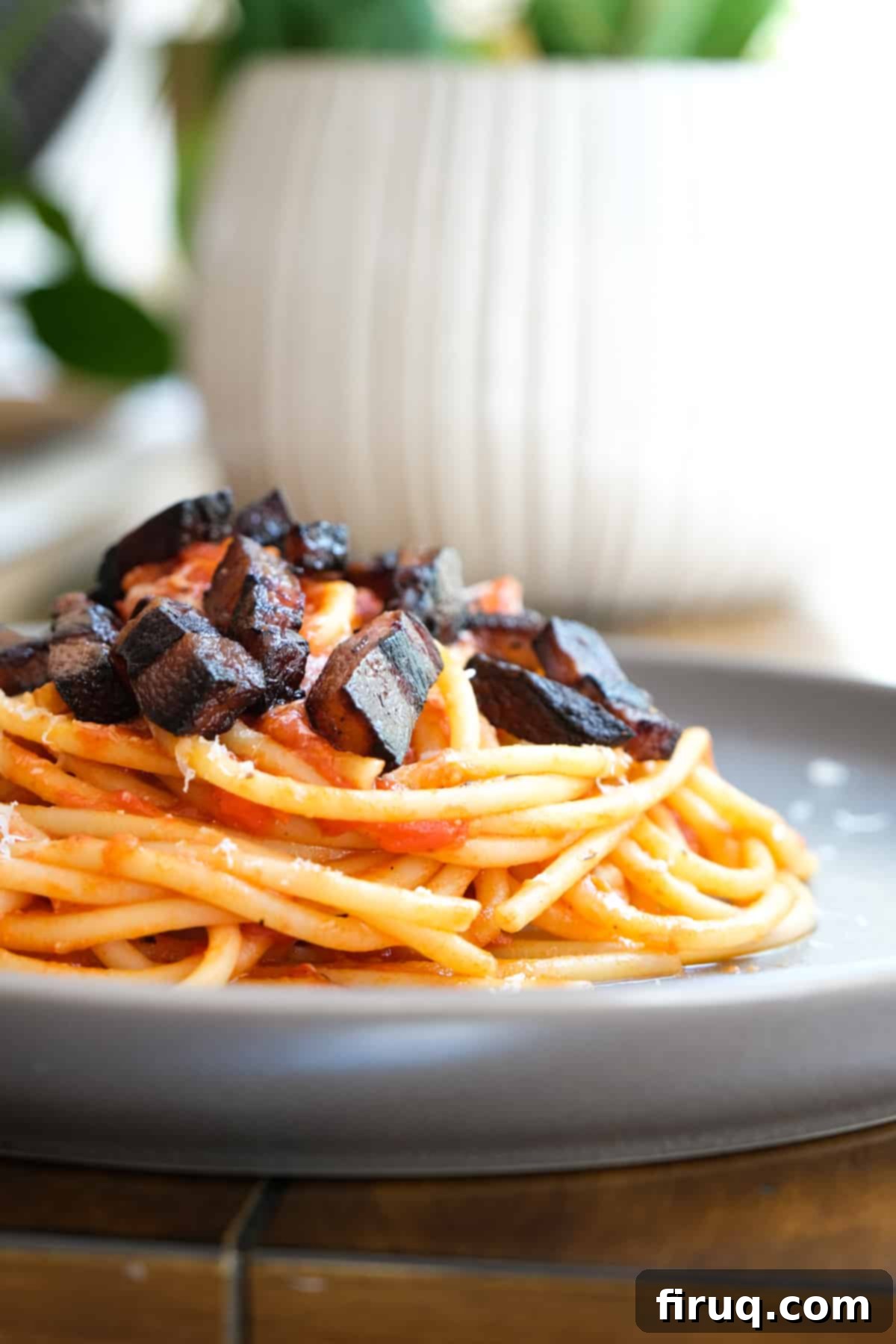
Craving more timeless Italian pasta dishes? Be sure to explore our recipes for Spaghetti Carbonara, Authentic Fettuccine Alfredo, or Pasta alla Norma.
[feast_advanced_jump_to]
The Rich History of This Classic Roman-Italian Pasta
Bucatini Amatriciana isn’t just a meal; it’s a pillar of Roman culinary tradition, one of the four revered classic Roman pasta dishes. Its slightly spicy tomato sauce, crafted from rich cured pork jowl, fresh black pepper, and sharp Pecorino Romano cheese, embodies the philosophy that simple, high-quality ingredients can create a truly complex and delicious experience. While it possesses a distinct kick, it’s generally milder than robust dishes like Shrimp Fra Diavolo with Linguine, offering a balanced warmth that lingers pleasantly on the palate.
The history of Amatriciana is as rich and layered as its flavor. Interestingly, its earliest form was a white sauce, a direct ancestor to the dish known today as Pasta alla Gricia. This original version, featuring guanciale, Pecorino, and black pepper, predates the widespread use of tomatoes in Italian cooking. It wasn’t until tomatoes were introduced to Italy from the Americas – a direct consequence of Columbus’s voyages – that they became a regular and beloved component of Italian cuisine, eventually transforming Amatriciana into the red sauce delight we cherish today. Originating in the pastoral town of Amatrice, local farmers and shepherds would gather, preparing fresh pasta with their readily available guanciale (cured pork jowl) and local cheese. Bucatini, a hollow, spaghetti-like pasta, was favored due to its practicality: easy to make, simple to wrap around wires for drying, and convenient for transport during their nomadic lives.
Today, while you might encounter Amatriciana made with various pasta shapes like rigatoni or spaghetti, true connoisseurs will always advocate for bucatini. The magic of this dish lies in the way bucatini’s hollow center acts as a perfect conduit, allowing the savory, spicy tomato sauce to fill every strand. This unique characteristic ensures an explosion of flavor in every bite, a sensation truly unmatched by other pasta shapes. The guanciale, with its uniquely intense flavor and melt-in-your-mouth texture, is arguably the star of the show. Its fat renders beautifully, forming the foundation of the sauce and imparting an unparalleled depth that distinguishes Amatriciana. Much like certain fictional characters have their particular culinary passions, my affection for pork jowl in this dish knows no bounds!
The Five Essential Ingredients for Authentic Bucatini Amatriciana
The beauty of Bucatini Amatriciana lies in its simplicity, relying on a handful of high-quality ingredients to create a symphony of flavors. Each component plays a crucial role in achieving the traditional taste and texture of this Roman masterpiece. Here’s a closer look at the stars of our dish:
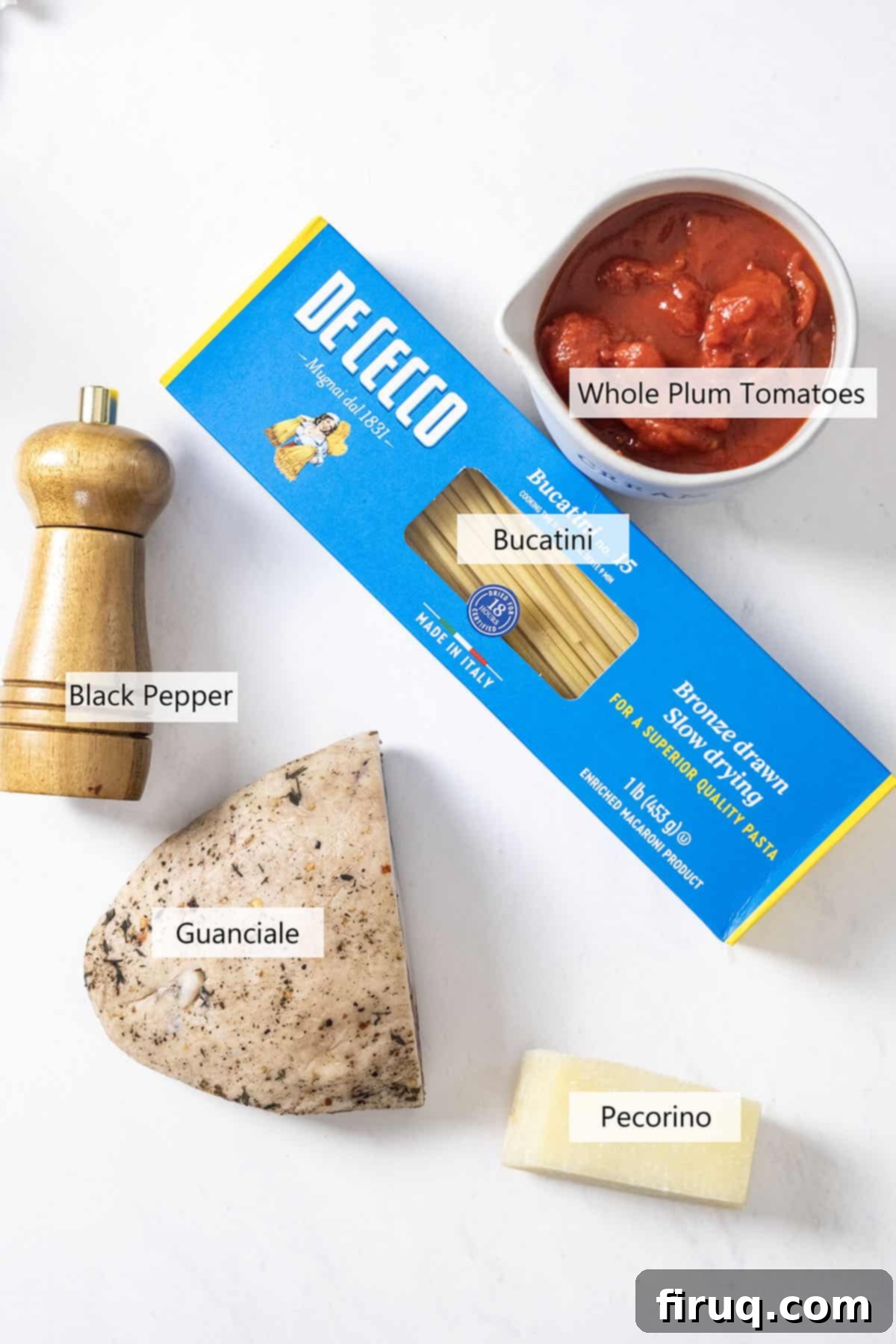
- Guanciale: This is the absolute cornerstone of an authentic Amatriciana. Guanciale is a rich, cured pork jowl, distinct from pancetta in its curing process and flavor. Its unique fat, when slowly rendered, creates an incredibly flavorful base for the sauce, lending a depth and complexity that cannot be replicated. The crispy bits that remain are a textural delight, offering a delicious crunch with every bite.
- Pecorino Romano: A true Roman staple, Pecorino Romano is a hard, salty cheese made exclusively from sheep’s milk (hence “pecora,” meaning sheep). It boasts a sharper, more assertive, and earthier flavor compared to Parmigiano Reggiano, with a delightful tanginess that cuts through the richness of the guanciale and tomato. Its robust character is essential for balancing the dish.
- Freshly Ground Black Pepper: While some modern interpretations might include chili flakes for heat, traditional Amatriciana relies on plenty of freshly ground black pepper for its subtle spice. It adds a nuanced warmth and aromatic depth that complements the other ingredients without overpowering them, staying true to the dish’s roots.
- Peeled Plum Tomatoes: High-quality canned peeled plum tomatoes are crucial. We prefer to hand-crush them into the sauce, which provides a rustic, chunky texture that releases their sweet and slightly acidic flavor profile more effectively than a smooth passata. Good quality San Marzano tomatoes are often recommended for their balanced sweetness and low acidity.
- Bucatini: This tubular pasta is the traditional and ideal choice for Amatriciana. Its distinctive tiny hole running through the center isn’t just a novelty; it’s a functional design element. As the pasta cooks in the sauce, the hollow interior fills with the rich Amatriciana, delivering an intense burst of flavor with every strand. It truly makes each mouthful an experience.
Understanding Substitutions in Bucatini Amatriciana
Italians, particularly when it comes to their cherished four classic Roman pasta dishes—Spaghetti Carbonara, Pasta all’Amatriciana (or Gricia, its white predecessor), Cacio e Pepe, and Bucatini Amatriciana—are famously passionate about authenticity. Messing with these recipes can be akin to culinary sacrilege! Having spent ample time in the kitchen, I’ve learned which recipes offer flexibility and which demand strict adherence to tradition. However, even with these revered classics, there are practical considerations.
The most common and understandable substitution involves the star ingredient: guanciale. While it’s true that you can substitute pancetta for guanciale in Amatriciana, it’s essential to understand the implications. The dish won’t be exactly the same, and that’s a simple fact. Bucatini Amatriciana, in its truest form, is uniquely delicious precisely because of guanciale. While a version with pancetta will undoubtedly still be delicious, the flavor profile will shift. Pancetta just tastes different than guanciale. Guanciale, being cured pork jowl, has a richer, more profound, and often more peppery flavor, with a fat that renders into a silky, savory oil, providing the foundation for the sauce. Pancetta, cured pork belly, is milder and its fat renders differently, creating a less intense, albeit still pleasant, base. Most purists would agree that while it’s a good alternative, a pancetta-based dish is no longer “Bucatini all’Amatriciana” but rather a delicious variation.
Similarly, regarding Pecorino Romano, if authenticity isn’t your absolute top priority or if Pecorino is hard to find, you can substitute Parmesan (Parmigiano Reggiano). And honestly, good food is good food, regardless of strict tradition. However, there’s a reason Pecorino is integral to the Roman four. Its sharp, tangy, and earthy flavor, derived from sheep’s milk, stands up beautifully to the richness of the guanciale and the acidity of the tomatoes. Parmesan, made from cow’s milk, is sweeter and nuttier, offering a different, albeit still delightful, flavor dynamic. When you prepare Bucatini Amatriciana using the traditional four ingredients—guanciale, Pecorino Romano, peeled plum tomatoes, and black pepper—you’ll truly understand why they were chosen, and why this specific combination creates such an enduring and iconic dish.
Mastering Bucatini all’Amatriciana: A Step-by-Step Guide
Crafting authentic Bucatini Amatriciana is far from difficult, requiring just a few key ingredients and simple steps. However, it does demand your presence and attention. The entire process, from start to finish, clocks in at around 30 minutes, which means you need to be actively engaged at the stove for that duration. The magic happens quickly, and timing is everything to achieve that perfect balance of crispy guanciale, deeply flavored sauce, and perfectly coated pasta!
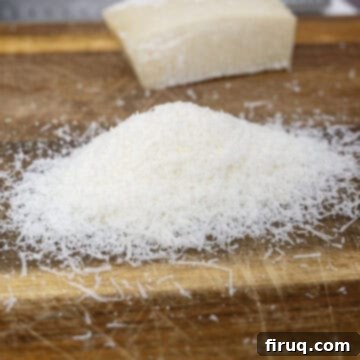
Before you even think about turning on the stove, crucial prep work ensures success. The Pecorino Romano must be grated into the finest possible pieces using your smallest grater setting. This fine texture is paramount; it will prevent it from clumping into globular pieces when it’s incorporated into the hot pasta and sauce, ensuring a silky, emulsified finish.

I find that preparing my guanciale by cutting it into strips (rather than small cubes) yields a far superior result. This method allows for a more even rendering of the fat, and when you take a bite, you get a more substantial and satisfying burst of its unique, rich flavor compared to tiny squares. The larger surface area also contributes to a wonderfully crispy texture.
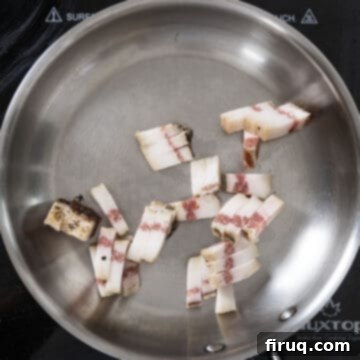
Step 1: Begin by placing the prepared guanciale strips into a cold frying pan. Gradually bring the pan to medium heat. This slow, gentle heating process is crucial: it allows the fat to slowly and fully render out, creating a flavorful oil that will form the base of your sauce. Continue frying until the guanciale pieces become beautifully crisp and golden brown, about 8-10 minutes. Resist the urge to rush this step; patience here yields unparalleled flavor.
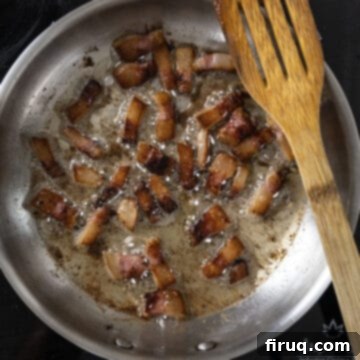
Step 2: Carefully remove the crispy guanciale from the pan using a slotted spoon, transferring it to a plate lined with paper towels to drain. It’s crucial to leave at least 3 tablespoons of the rendered guanciale fat (oil) in the pan—this golden, flavorful liquid is the foundation of our sauce. Ensure the guanciale doesn’t burn; it should have a beautiful reddish-brown hue, as depicted above, indicating perfect crispness without bitterness.
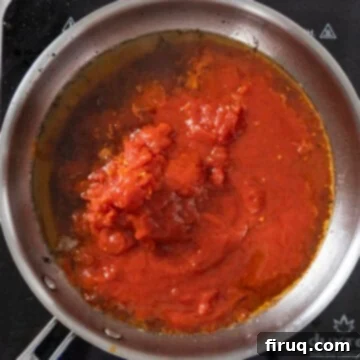
Step 3: Now, the tomatoes! Take your canned peeled plum tomatoes and hand-squeeze them directly into the hot guanciale oil in the pan. This rustic method creates a delightful texture that chopped tomatoes simply can’t match. Bring this nascent sauce to a robust boil, then immediately reduce the heat to a gentle simmer. Generously grind fresh black pepper into the sauce. This is where the sauce begins to build its complex layers of flavor.
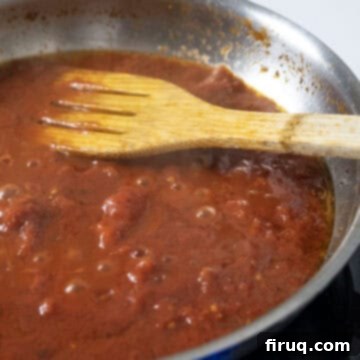
Step 4: Allow the tomato sauce to simmer gently for about 10 minutes, letting the flavors meld and deepen. Meanwhile, get your pasta water ready: boil a large pot of heavily salted water – it should taste like the sea! Add the bucatini and cook it until it’s 1-2 minutes before reaching al dente. This slight undercooking is crucial as the pasta will finish cooking in the sauce. Before draining, make sure to reserve at least ½ cup of this starchy pasta water; it’s liquid gold for emulsifying your sauce. Add ¼ cup of this reserved pasta water into the simmering tomato sauce and mix it vigorously to combine, creating a luscious texture.
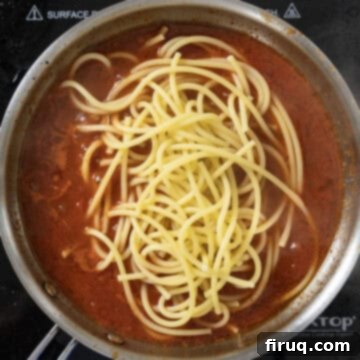
Step 5: Using tongs or a pasta fork, transfer the slightly undercooked bucatini directly into the red sauce in the saucepan. This isn’t just a quick transfer; it’s about finishing the pasta *in* the sauce, allowing it to absorb those incredible flavors and for its starch to further thicken and emulsify the sauce. Toss it thoroughly and let it simmer together with the sauce for another 2 minutes, stirring frequently. This step is vital for ensuring every strand of bucatini is perfectly coated and infused.
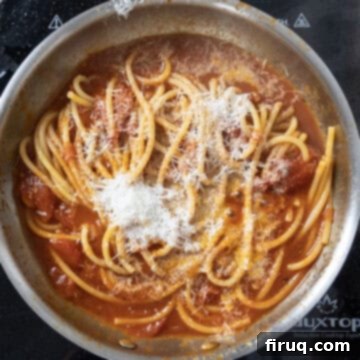
Step 6: The final, delicate touch! Remove the saucepan from the heat. Add the finely grated Pecorino Romano cheese to the pasta and sauce. Toss vigorously off the heat. The residual heat will melt the cheese, creating a creamy, emulsified sauce without clumping. This technique is key to achieving that signature smooth finish. Serve your magnificent Bucatini Amatriciana immediately, garnishing each plate with the reserved crispy guanciale for an irresistible textural contrast.
Pro-Tips for Perfect Bucatini Amatriciana
Achieving a truly exceptional Bucatini Amatriciana goes beyond just following the steps; it involves understanding the nuances of the technique. These pro-tips will help elevate your dish from good to unforgettable:
- **Start Guanciale in a Cold Pan for Optimal Rendering:** This is perhaps the most critical tip. Always place your guanciale into a cold pan and then gradually bring it to medium heat. This gentle heating allows the fat to slowly render out, creating maximum flavor and producing those perfectly crisp, golden-brown bits of meat. Rushing this process by starting in a hot pan can cause the guanciale to seize up, burn, or fail to release its precious fat, which is the heart of your sauce.
- **Maintain a Strong Simmer for Sauce Absorption:** While simmering, ensure your tomato sauce remains at a consistent, strong simmer. This isn’t merely about cooking the tomatoes; it’s essential for allowing the bucatini to absorb the sauce’s flavors. After adding the pasta water, ensure the sauce returns to a lively simmer. The pasta *needs* to finish cooking in the sauce itself—this process infuses every hollow strand with rich tomato and guanciale essence. Simply pouring sauce over pre-cooked pasta will not yield the same depth of flavor or coating.
- **Always Reserve Extra Pasta Water:** Never underestimate the power of pasta water! It’s your secret weapon for creating a silky, emulsified sauce. You’ll finish cooking the pasta directly in the sauce, and the starch from the pasta water helps bind everything together. If your sauce becomes too thick during the final cooking stage, a splash more of that reserved pasta water will bring it to the perfect consistency, ensuring it beautifully coats every piece of bucatini. Always have a bit more on hand than you think you’ll need.
- **Incorporate Pecorino Off the Heat:** To prevent your Pecorino Romano from clumping into an unappetizing stringy mess, always remove the saucepan from direct heat before adding the finely grated cheese. The residual heat from the pasta and sauce will be enough to melt the Pecorino smoothly, allowing it to emulsify into a glorious, creamy coating that clings to the bucatini without becoming rubbery. This ensures a uniform, rich, and tangy cheesy flavor throughout the dish.
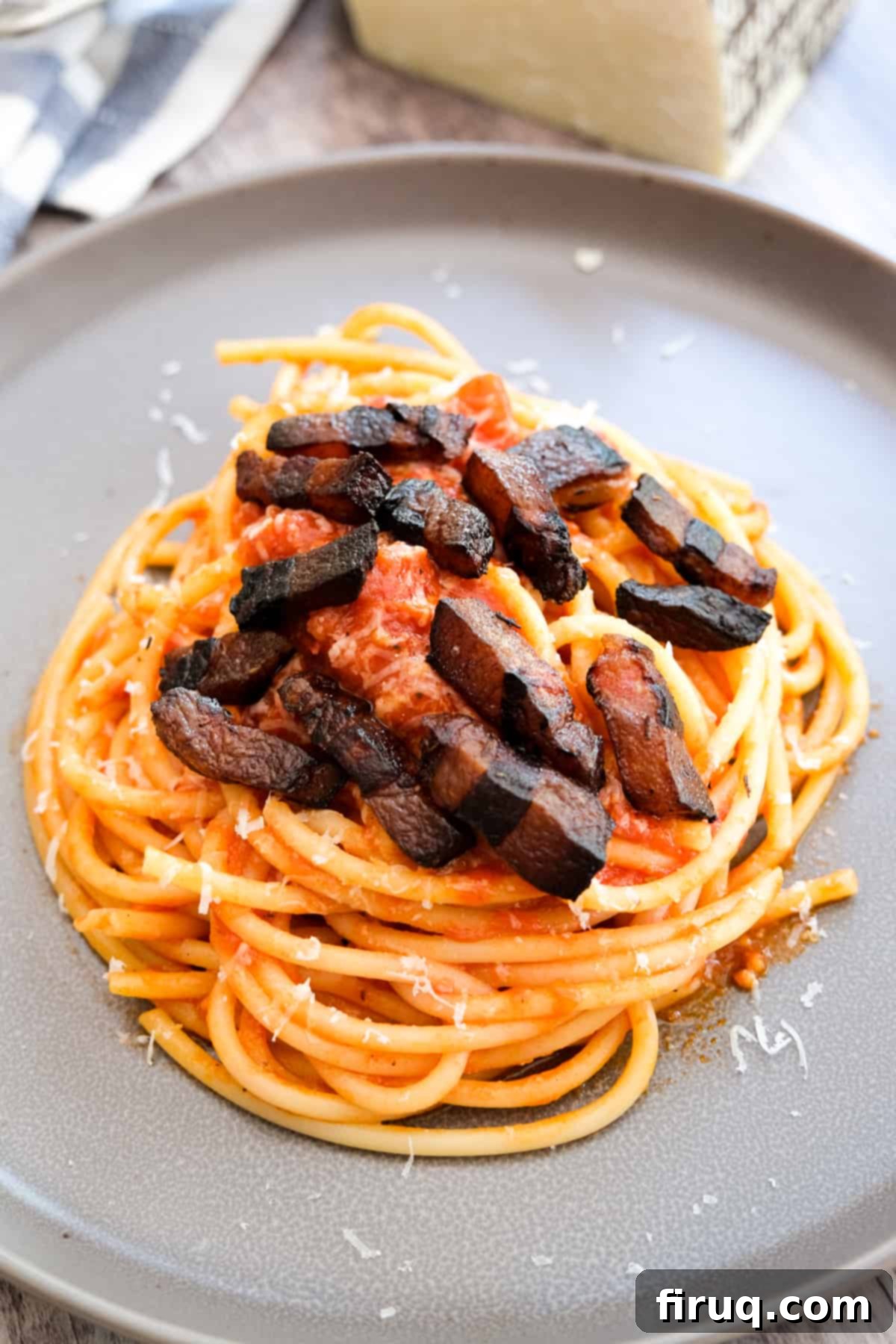
Perfect Pairings: What to Serve with Bucatini Amatriciana
Bucatini Amatriciana is a hearty and flavorful dish on its own, but it truly shines when paired with complementary sides. Consider serving it alongside some fresh vegetables or a light protein to create a well-rounded and satisfying Italian meal.
- Chicken Dishes: For a delicious protein boost, consider a flavorful chicken main. Our favorites include Restaurant-Style Chicken Saltimbocca (with its sage and prosciutto notes), the delicate Restaurant-Style Chicken Francese, or the rustic Fennel Chicken Thighs in Red Wine.
- Pork or Beef Mains: If you’re looking for a more substantial pairing, a robust pork or beef dish can be a fantastic choice. Try the deeply savory Authentic Italian Braciole, the flavorful Italian Ring Sausage (Chevalatta), or the comforting Classic Italian Fried Meatballs.
- Fresh Vegetable Sides: Always balance your pasta with a fresh, vibrant vegetable side. Options like our Italian Lacinato Kale Recipe (Tuscan), tender Sautéed Rapini with Garlic, or crisp Garlic Parmesan Green Beans offer a refreshing contrast and round out the meal beautifully.
Bucatini Amatriciana: Your Questions Answered
While both are cured pork products essential in Italian cuisine, they come from different parts of the pig and have distinct characteristics. Guanciale is cured pork jowl (cheek), offering a richer, more intense, and often peppery flavor. Its fat renders into a silky, savory oil that forms an unparalleled base for sauces. Pancetta, on the other hand, is cured pork belly, similar to unsmoked bacon. It tends to be milder in flavor and has a slightly firmer bite after cooking compared to the melt-in-your-mouth quality of guanciale. For authentic Roman pasta dishes, guanciale is traditionally preferred for its unique depth.
Yes, there is a significant difference! Spaghetti is a solid, thin, round strand of pasta. Bucatini, while similar in length and thickness, is a tubular pasta with a tiny hole running through its center, much like a thin straw. This distinctive characteristic makes bucatini ideal for Amatriciana because the sauce can penetrate and fill the hollow interior, ensuring that every bite delivers an explosion of flavor directly from the sauce-filled pasta.
While some contemporary recipes and personal preferences might lead to the addition of chili flakes, in the very classic and original Roman dish, the spice typically comes from freshly ground black pepper. The four fundamental ingredients of traditional Amatriciana are peeled plum tomatoes, guanciale, Pecorino Romano, and black pepper. The black pepper provides a nuanced warmth rather than an overt fiery heat.
Traditionally, authentic Bucatini Amatriciana does not include onion or garlic. The philosophy of the classic Roman pasta dishes emphasizes a minimalist approach, allowing the core ingredients—especially the guanciale and Pecorino—to truly shine. Adding onion or garlic, while common in many other Italian-American or regional Italian sauces, would alter the distinct flavor profile that defines true Amatriciana. We recommend sticking to the four core ingredients for the most authentic experience.
Explore More Delicious Pasta Recipes
- Umami Shrimp Scampi Without Wine
- Classic Linguine Alla Puttanesca
- Linguine with Red Clam Sauce
- Busiate with Pesto Trapanese
We absolutely love hearing from you! Be sure to leave a comment or review below to share your experience with this delicious recipe. For more culinary inspiration and daily cooking tips, follow us on Instagram @vindelgiudice or TikTok @alwaysfromscratch. Happy cooking!
📖 Recipe
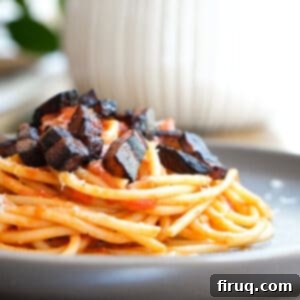
Bucatini Amatriciana
Vincent DelGiudice
Pin Recipe
Equipment
-
1 large saucepan
Ingredients
- 6 oz guanciale, cut into strips
- ½ lb bucatini pasta
- ⅔ cup pecorino romano finely grated
- 1 teaspoon black pepper freshly ground
- 14 oz peeled tomatoes whole, hand-squeezed
Instructions
-
Begin by preparing your guanciale. Cut the guanciale into elegant strips or small pieces, as preferred. Place these guanciale pieces into a cold saucepan. Turn the heat to medium and let the guanciale slowly fry for approximately 8-10 minutes, allowing its rich fat to render out beautifully and the meat itself to become wonderfully crisp and golden brown. Once perfectly crispy, remove the guanciale from the pan with a slotted spoon, ensuring you leave at least 3 tablespoons of the rendered, flavorful oil in the pan. Set the crispy guanciale aside.
-
Into the fragrant guanciale oil remaining in the saucepan, hand-squeeze your peeled tomatoes. The rustic texture from hand-crushing is key. Generously grind fresh black pepper directly into the sauce. Bring the sauce to a rolling boil, then immediately reduce the heat to a gentle simmer, allowing the flavors to meld and develop over the next few minutes.
-
While your sauce is simmering, bring a large pot of water to a vigorous boil. Liberally salt the water—it should taste like the sea—then add your bucatini pasta. Cook the bucatini until it is about 1-2 minutes before it reaches the al dente stage. It’s crucial to slightly undercook it now, as it will finish cooking in the sauce. Before draining, make sure to save at least ½ cup of this starchy pasta water; it’s essential for creating a perfectly emulsified sauce.
-
Add ¼ cup of the reserved pasta water into your simmering tomato sauce and stir well to combine and slightly thicken. Now, transfer the slightly undercooked bucatini directly from its cooking pot into the saucepan with the red sauce. Toss the pasta vigorously to ensure every strand is coated. Let it simmer together with the sauce for an additional 2 minutes, allowing the bucatini to absorb the flavors and finish cooking to a perfect al dente texture.
-
For the final touch, remove the saucepan from the heat. Add the finely grated Pecorino Romano cheese to the pasta and sauce. Toss everything energetically until the cheese melts beautifully and combines with the sauce, creating a creamy, emulsified coating that clings to the bucatini. Serve your authentic Bucatini Amatriciana immediately, topping each plate with the crispy guanciale you set aside earlier. Enjoy this true taste of Rome!
Notes
- Always cook guanciale starting in a cold pan to slowly render the fat and achieve golden-brown, crispy pieces.
- When simmering the sauce with pasta, ensure the heat is high enough to maintain a strong simmer. The pasta needs to cook in the sauce to properly absorb the flavors and help emulsify it.
- Don’t forget to reserve plenty of pasta water! It’s crucial for adjusting the sauce consistency and creating a creamy finish, especially if the sauce gets too thick during the final cooking stage.
- Add the Pecorino Romano off the heat, tossing vigorously, to prevent it from clumping and to ensure a smooth, creamy sauce.
Nutrition
